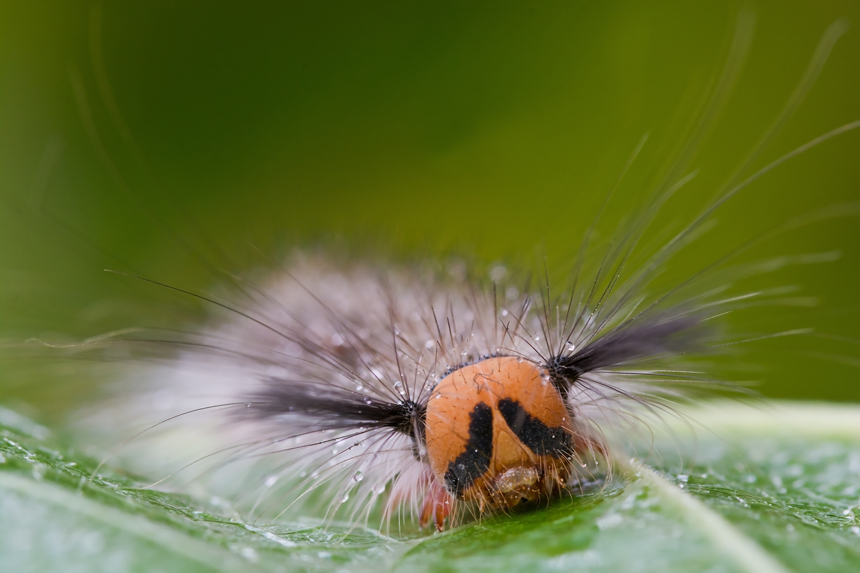Senior managing editor and logophile Andy Hollandbeck reveals the sometimes surprising roots of common English words and phrases. Remember: Etymology tells us where a word comes from, but not what it means today.
In Swiss German, they’re called Teufelskatz, literally “devils’ cat.” In Modern French, chenille “little dog.” The Portuguese call it lacerta, derived from the Latin word for “lizard.” In English, we call it the caterpillar, but that name, too, calls one animal by the name of another. Well, most likely.
Though the etymology of caterpillar isn’t understood with complete certainty, the prevailing theory on how this word came to be is that it really does begin with a “cat.” So what, then, is an erpillar?
Of course, that’s not how language or language change works.
What we know is that woolly worms were called chatepelose in Old French, or caterpilose in Old North French. Both versions combine common words for “cat” (from the Latin catta) and “hair” (from the Latin pilus, the source of words like depilatory and pileated). So these old French words, which English speakers picked up in the mid-15th century, literally translated to “hairy cat.”
In Late Middle English, the word was more like catyrpel. It is theorized that the word’s pronunciation may have been influenced by the now obsolete word piller, which means “plunderer” — that is, one who pillages. And to a gardener, pillage is what these little leaf-eaters do on their way to mothdom or butterflyhood.
Because piller fell naturally on the tongue of English speakers, catyrpel over time morphed into something closer to caterpillar, the spelling of which would have been nailed down during later reforms in spelling and standardization.
The 17th-century philologists that Samuel Johnson tapped when compiling his dictionary in the mid-18th century also believed that caterpillar came from chatte peluse, but they identified this as a name for a weasel (yet another animal name for this little guy), and the roots they identify are questionable at best.
The chatte, they say, is derived from cates, which they equate with “food.” I don’t know exactly what the connection is here: cater was a relatively new word in English at the time, and though it did mean “to provide food,” but the word itself traces back to a root that means “buyer” — not specifically food-related. And for peluse, they go straight to piller, without the intervening hairiness. A chatte peluse “food pillaging” weasel, they surmised, was so called because it “eats up the fruits of the earth.” Weasels, however, are carnivores, more likely to keep other small animals out of one’s garden than to wreak havoc on your fruits and vegetables. So this etymology doesn’t hold up well.
Become a Saturday Evening Post member and enjoy unlimited access. Subscribe now




Comments
Splendid articles all! Fascinating stuff! Very entertaining, I picked up quite a bit!
Great back story feature on the wonderful (to me) caterpillar. That special ‘worm’ on its odyssey to be coming a butterfly. It doesn’t make sense until you explain it here. I found one at recess in the 1st grade and brought it into the classroom. Sister noticed, opened the back door, and told me to take it outside which I did, then washed my hands.